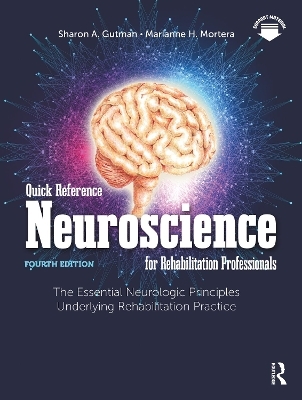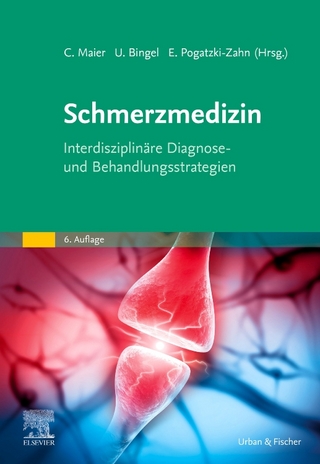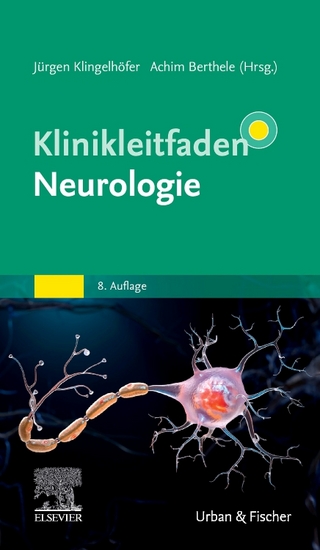
Quick Reference Neuroscience for Rehabilitation Professionals
SLACK Incorporated (Verlag)
978-1-63822-054-1 (ISBN)
- Titel nicht im Sortiment
- Artikel merken
The book starts by illustrating the basics of neuroanatomy, before addressing the function of neurological systems underlying motor, sensory, visual, perceptual, cognitive, emotional, and memory disorders. Along with new full color illustrations and photographs, the book has been updated to include the following additional material:
Full screening procedures have been added to the cranial nerve section.
Full color illustrations have been added to the special sense receptor section to illustrate the clinical pathology underlying visual field impairments.
New sections have been added addressing attention and cognition.
A subsection, "Occupational Performance Implications," was added to all sections to help readers understand how function/dysfunction of neuroanatomical systems impact performance in daily life activities.
This updated fourth edition continues to be essential reading for any healthcare professional working in rehabilitation, or students on the journey to become rehabilitation professionals.
Sharon A. Gutman, PhD, OTR/L, FAOTA, is Professor in the Occupational Therapy Doctorate Program at Rutgers University. She is a prolific scholar who has substantially contributed to the occupational therapy literature through a career spanning more than 30 years that produced 75 peer-reviewed journal articles, 12 books, 18 book chapters, and 24 editorials as editor-in-chief of the American Journal of Occupational Therapy. Her body of 75 peer-reviewed journal articles has been cited over 1900 times and uniquely addresses interventions with marginalized populations, including housing programs for sheltered homeless adults, supported education and employment for adults with chronic mental illness, and life skills for women who became homeless after domestic violence. Dr. Gutman has also made substantial and innovative contributions to the education of occupational therapists through her 12 textbooks which are heavily used in occupational therapy programs nationally and internationally, and have been translated into several languages. She is also known for her 6-year editorship of American Journal of Occupational Therapy (2008–2014), through which she significantly increased the journal’s impact factor and Journal Citation Report rank. Dr. Gutman was inducted into the American Occupational Therapy Association's Roster of Fellows (2009) and awarded the Eleanor Clarke Slagle Lectureship (2021) to recognize her contribution to the profession’s body of literature. Marianne H. Mortera, PhD, OTR/L, is an Associate Professor in the Occupational Therapy Doctorate Program at Rutgers University. Dr. Mortera has been an occupational therapist since 1987. Her initial clinical expertise in neurological, cognitive, acquired brain injury and spinal cord injury rehabilitation started in the Departments of Physical Medicine and Rehabilitation at Mount Sinai Hospital and the Rusk Institute of Rehabilitation Medicine at New York University Medical Center. Her research has focused on the return to productivity in Operation Enduring Freedom/Operation Iraqi Freedom Veterans with traumatic brain injury (TBI), and the development and initial testing of the Mortera Cognitive Screening Measure and the Cognitive Screen for Grooming. Her current research includes reviews of pharmacological and yoga interventions for individuals with TBI and functional outcomes, the examination of the effectiveness of complementary integrative medicine in TBI rehabilitation, and validity standards in rehabilitation research and practice. Dr. Mortera has written several book chapters and journal articles on brain injury rehabilitation, cognitive assessment, and occupational therapy interventions. For more than 35 years, Dr. Mortera has been an occupational therapy faculty member in entry-level and post-professional educational programs.She has developed and taught more than 40 courses in neuroscience, kinesiology, neurorehabilitation, physical disabilities, cognitive rehabilitation, medical conditions, clinical practice guidelines, theory, research methods, measurement, and applied scientific inquiry. She is a continuing education provider and has presented nationally and internationally on neuroscience underlying occupational therapy interventions, cognitive assessment, treatment effectiveness, and study quality in brain injury rehabilitation research and practice.
Introduction 1 Directional Terminology 2 Division of the Nervous System 3 Gross Cerebral Structures 4 Ventricular System 5 The Cranium 6 The Meninges 7 Spinal Cord Anatomy 8 The Cranial Nerves 9 Sensory Receptors 10 Neurons and Action Potentials 11 Special Sense Receptors 12 Vestibular System Functions and Dysfunctions 13 Autonomic Nervous System 14 Enteric Nervous System 15 Spinal Cord Tracts 16 Spinal Cord Injury and Disease 17 Pain 18 Peripheral Nerve Injury and Regeneration 19 Phantom Limb Phenomenon 20 Proprioception 21 Neurologic Mechanisms and Disorders of Muscle Tone 22 Motor Functions and Dysfunctions of the Central Nervous System: Cortex, Basal Ganglia, and Cerebellum 23 Sensory Functions and Dysfunctions of the Central Nervous System 24 Thalamus and Brainstem: Sensory and Motor Functions and Dysfunctions 25 Perceptual Functions and Dysfunctions of the Central Nervous System 26 Blood Supply of the Brain and Cerebrovascular Disorders 27 Neurologic Mechanisms of Attention 28 Neurologic Mechanisms of Higher-Order Cognitive Functions 29 Neurologic Mechanisms of Memory 30 Neurologic Mechanisms of Emotion Glossary
| Erscheinungsdatum | 02.05.2024 |
|---|---|
| Verlagsort | Thorofare |
| Sprache | englisch |
| Maße | 216 x 279 mm |
| Gewicht | 1732 g |
| Themenwelt | Sachbuch/Ratgeber ► Gesundheit / Leben / Psychologie |
| Medizin / Pharmazie ► Medizinische Fachgebiete ► Neurologie | |
| Medizin / Pharmazie ► Physiotherapie / Ergotherapie ► Ergotherapie | |
| Naturwissenschaften ► Biologie ► Humanbiologie | |
| Naturwissenschaften ► Biologie ► Zoologie | |
| ISBN-10 | 1-63822-054-9 / 1638220549 |
| ISBN-13 | 978-1-63822-054-1 / 9781638220541 |
| Zustand | Neuware |
| Informationen gemäß Produktsicherheitsverordnung (GPSR) | |
| Haben Sie eine Frage zum Produkt? |
aus dem Bereich


